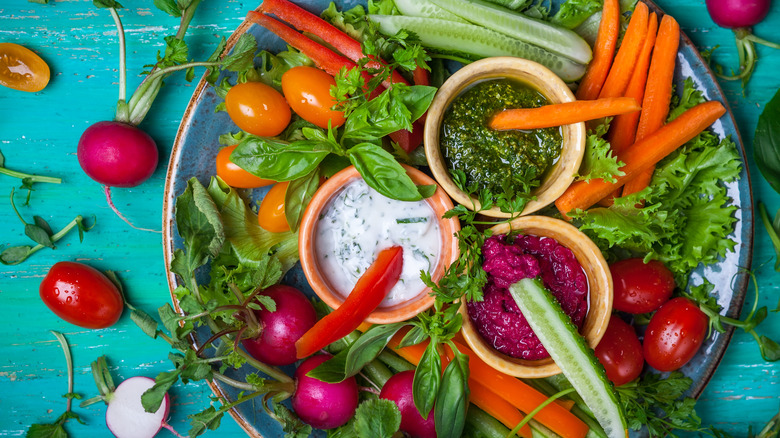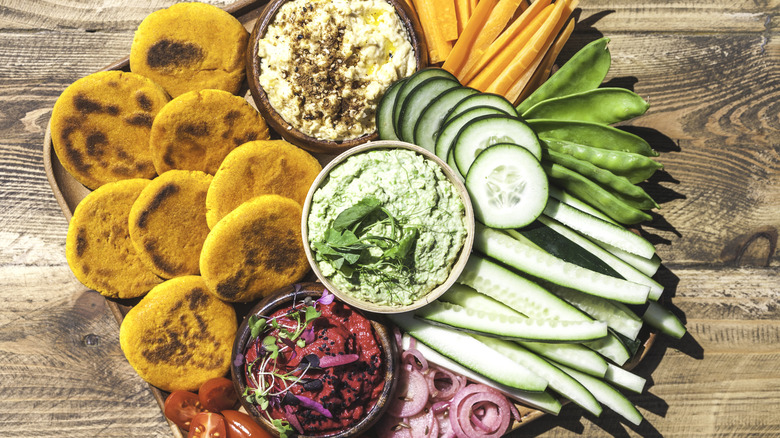What Is A Crudités Platter And How Do You Make One?
While charcuterie boards and cheese boards may immediately come to mind when dreaming up the perfect spread, crudités platters are just as important for well-rounded hors d'oeuvres. First appearing in 20th-century France, crudités platters are made up of an assortment of raw or blanched vegetables often served with various dips. Some of the most common veggies that make these up include carrots, celery, broccoli, bell peppers, cucumbers, cauliflower, and tomatoes. The veggies are usually cut up into bite-sized pieces and presented in a colorful and eye-catching way.
While some veggies are suitable to enjoy raw, some could benefit from a quick blanching so that they're a bit easier for your guests to eat. Veggies that you should consider blanching include broccoli, cauliflower, snap peas, green beans, asparagus, and sweet baby corn. To do this, simply bring a pot of water to a boil and drop in your veggies for a minute or two before removing them and allowing them to dry and cool completely.
When creating your platter, take some advice from how experts arrange better cheese boards. For example, consider using a variety of dips so your guests can pick and choose their favorite. Popular crudités dips include chickpea hummus, ranch dressing, cold spinach dip, and roasted red pepper spread. Add the dips to the board first, then arrange the veggies in whatever creative way you choose.
How to make your crudités platter ahead of time and keep it fresh
One of the most important parts of serving a crudités platter is to make sure everything is as fresh as possible upon presenting it to your guests. If you're making a ton of appetizers or dishes, it may not be possible for you to slice your veggies right before serving, so prepping them in advance could be a lifesaver. To do this, slice them and add them to a bowl of cold water. Store them in the refrigerator for a few hours or up to a day. If you're prepping a day ahead, change out the water about halfway through. When you're ready to serve, pat them dry before arranging them on your board. Keep in mind that this works best for crunchy veggies, such as carrots, cucumbers, bell peppers, or radishes. If you're looking to cut non-crunchy veggies like tomatoes, you can slice them, store them cut-side down on some paper towels in an airtight container, and keep them in the fridge for up to two days.
When it comes to your dips, you can make them a day ahead and store them in an airtight container in the refrigerator until you're ready to use them. Once you've arranged your board, you may want to dress it up even more. To make your board pop, add some garnishes, such as fresh herbs, microgreens, or edible flowers.


